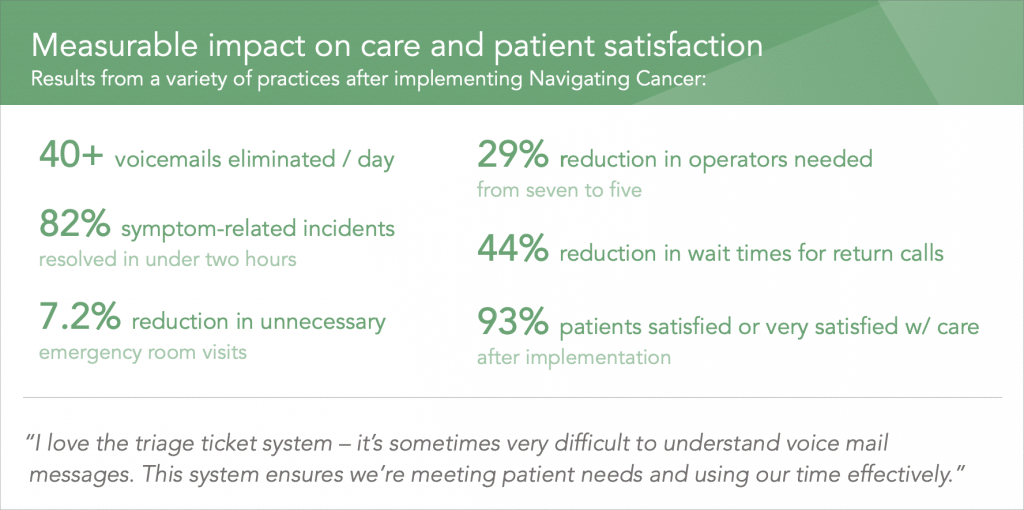At Navigating Cancer we talk to all different kinds of cancer care providers, including small, community practices, large, multi-location practices, or even hospitals and health systems. They’re all facing similar challenges and regulatory pressures to:
- Help patients avoid the emergency department and subsequent hospitalizations
- Monitor and manage oral adherence for chemotherapy
- Involve the patient in their care via shared-decision making and personalized information
While each practice has unique challenges – succeeding in the Oncology Care Model, maintaining their QOPI certification, ensuring patient satisfaction via CAHPS surveys, or a host of other outcomes-based measures – Patient Relationship Management (PRM) technology helps make these endeavors achievable.
What PRM does for clinics
- Gets everyone on the same page. Sticky notes, personal calendars and excel spreadsheets are replaced by digital reminders, tasks, items due, and triage tickets all in one system that is accessible by the entire team.
- Organizes incoming patient needs according to severity and risk, so the sickest patients get helped first – not the last voicemail left on the phone. When nurses are able to evaluate a patient’s symptoms using the integrated pathways, and offer immediate intervention, they are better equipped to prevent unnecessary emergency department visits.
- Supports oral adherence in two ways. The first is treatment-specific education delivered in conjunction with the patient’s treatment schedule so they are reading it right when the information is important and relevant. The second is a remote monitoring program that prompts the patient to report on adherence and enables the care team to not only track start dates and adherence, but also offer early intervention if an issue comes up.
- Increases patient engagement. With a PRM, the patient is always at the center of their care. Instead of getting multiple calls regarding the same thing or worse, not getting a call back when they are in distress, the care team can coordinate with each other and provide the patient with personalized care and information. Digital and automated tools also empower the patient to stay connected with the care team, access important information, and experience better outcomes.
- Allows for extensive data access. Your practice can almost immediately start identifying trends, opportunities for improvement or areas for improvement.
There are a host of other great advantages to adding PRM to your practice, but we see these benefits making the most immediate impact right out of the gate. Some results of PRM success we’ve seen in our partner clinics include:

- The elimination of 40+ voicemails each day
- The resolution of 82% of symptom-related incidents in under two hours
- 7.2% reduction in unnecessary emergency room visits
- 29% reduction in operators needed (from 7 to 5)
- 44% reduction in wait times for return calls
- 93% patients satisfied or very satisfied with their care after implementation
If you’re interested in learning more download our latest eBook: Patient Relationship Management – the new standard in cancer care.
